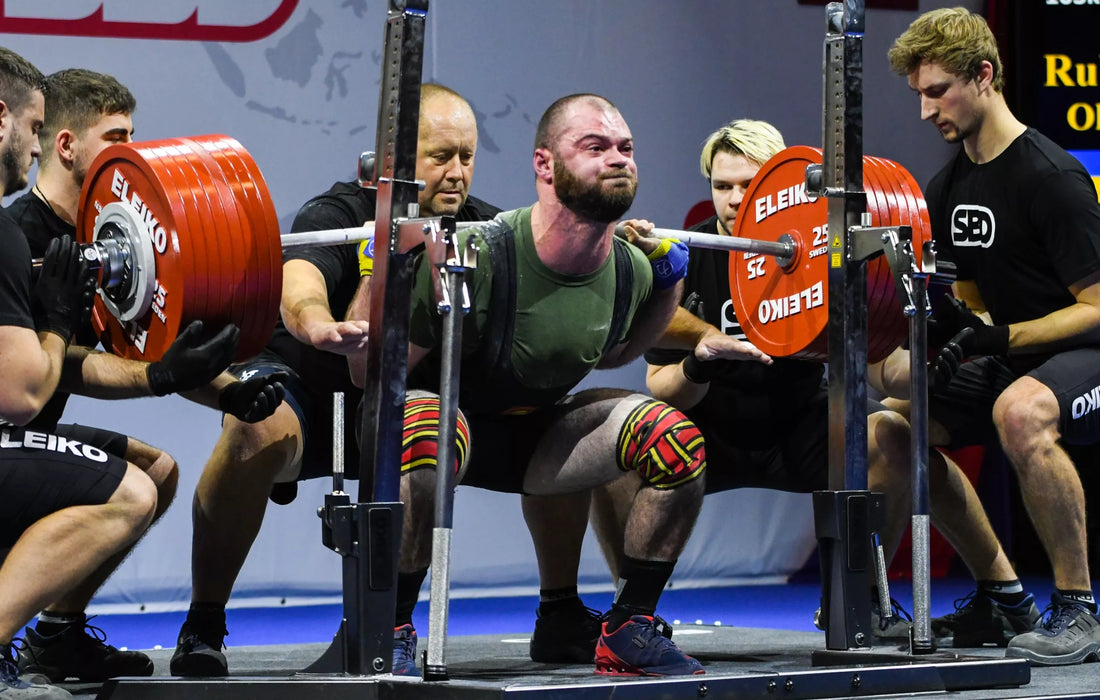
Body Composition for Powerlifters: Why Muscle Matters More Than Mass
In powerlifting, the concept of "mass moves mass" is a well-known adage. And it's true—to a point. But a more accurate statement would be: muscle moves mass. Your body composition—the ratio of lean muscle mass to fat mass on your frame—is a far more critical factor for your long-term strength potential and competitiveness than your total body weight alone. This guide will explore why body composition matters and how to optimize it for powerlifting. 
The Science: Relative Strength and Leverage
- Relative Strength: This is your strength relative to your body weight. It's what powerlifting scoring formulas like DOTS and GL Points are designed to measure. Muscle is the contractile tissue that produces force. Body fat is largely non-contractile dead weight. Therefore, at the same body weight, the lifter with more muscle and less fat will almost always be relatively stronger.
- Leverage: While some body fat can provide a small advantage in leverage (e.g., a larger belly can reduce the range of motion in the deadlift), this is a minor benefit that is quickly outweighed by the negative effects of excessive body fat. As explained by many biomechanics resources, including those from Chris Beardsley, muscle is the primary driver of internal leverages.
The Performance Impact of Body Composition
Why More Muscle is Better
- Higher Strength Potential: A larger muscle has a greater cross-sectional area, which gives it a higher potential to produce force.
- Improved Recovery: A leaner, more muscular physique is often associated with better insulin sensitivity and nutrient partitioning, meaning the food you eat is more likely to be used for muscle repair and glycogen storage rather than fat storage.
The Downsides of Excessive Body Fat
- Reduced Work Capacity: Carrying excess body fat can make it harder to recover between sets and handle high training volumes.
- Health Implications: High levels of body fat are associated with increased inflammation, higher blood pressure, and other negative health markers that can impede recovery and training longevity.
- Making Weight: For a competitive lifter, being overly fat makes it much harder to strategically cut weight for a meet without losing significant strength.
How to Improve Your Body Composition for Powerlifting
Improving body composition is a long-term process that involves a combination of smart nutrition and training.
- The "Recomp": For beginners or those with higher body fat, it's possible to build muscle and lose fat simultaneously, a process known as body recomposition. This requires eating around maintenance calories with a very high protein intake.
- Dedicated Phases: For more advanced lifters, it's often more effective to use dedicated training blocks:
-
- A "Lean Bulk" Phase: A period of being in a small, controlled calorie surplus to maximize muscle gain while minimizing fat gain. This is the primary strategy for improving body composition.
- A "Cutting" Phase: A period of being in a moderate calorie deficit to shed excess body fat while using heavy training to preserve as much muscle as possible.
Stop thinking only about your body weight and start thinking about your body composition. The goal of a powerlifter is not just to be heavy, but to be muscular and powerful. By focusing your long-term nutritional and training strategies on building lean muscle mass, you will not only improve your relative strength and competitiveness but also build a healthier, more resilient body for a long career in the sport.








